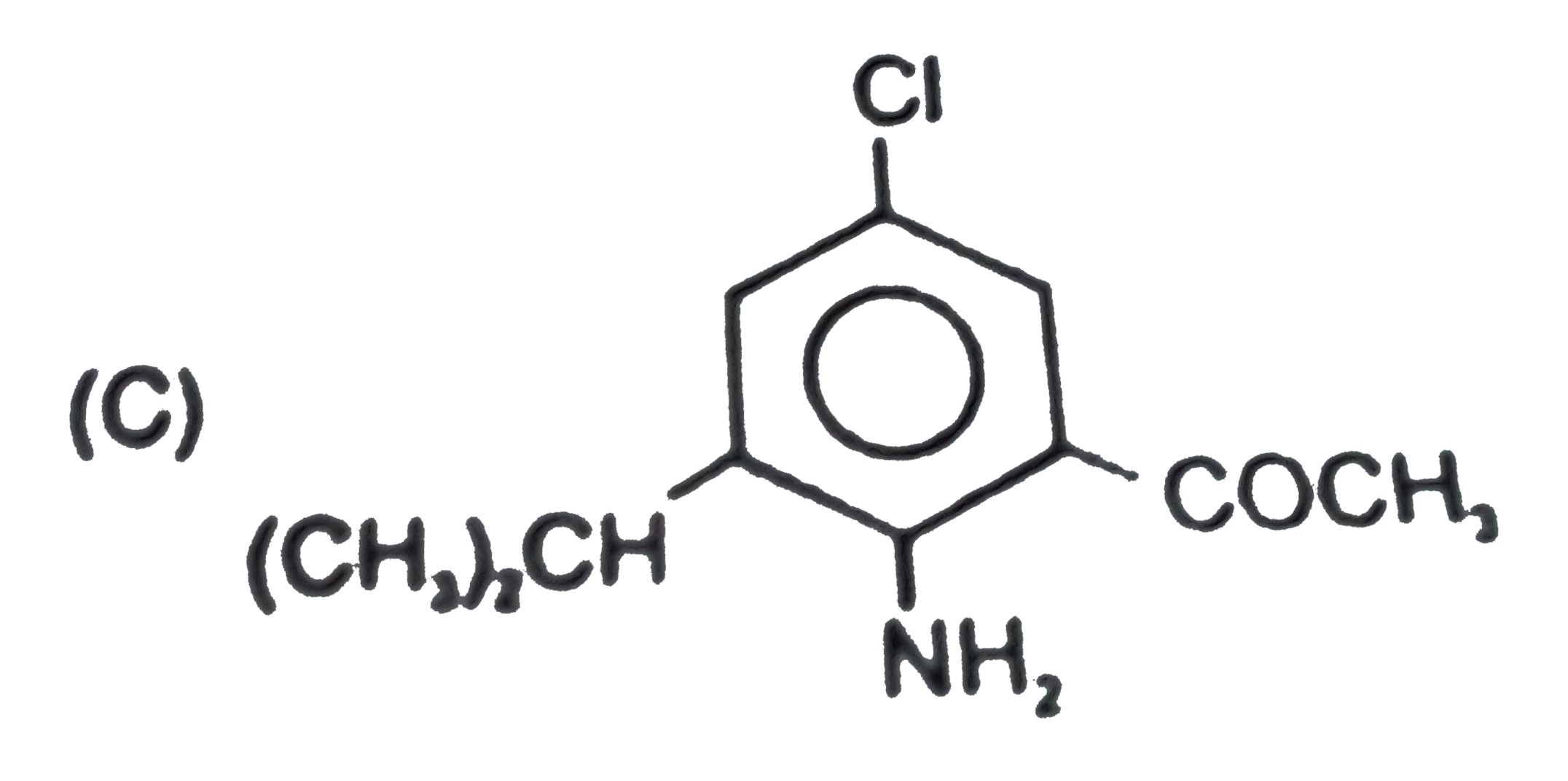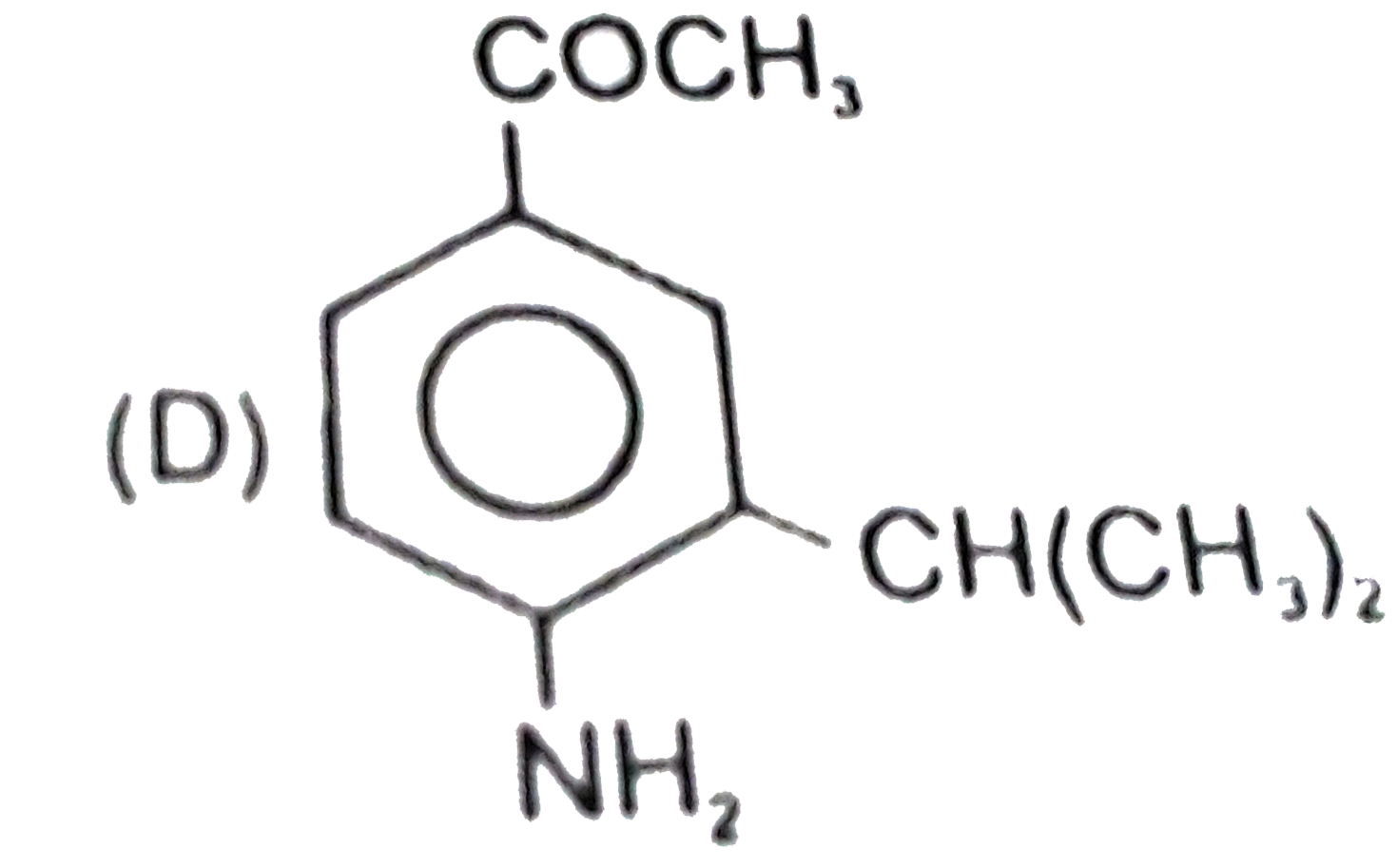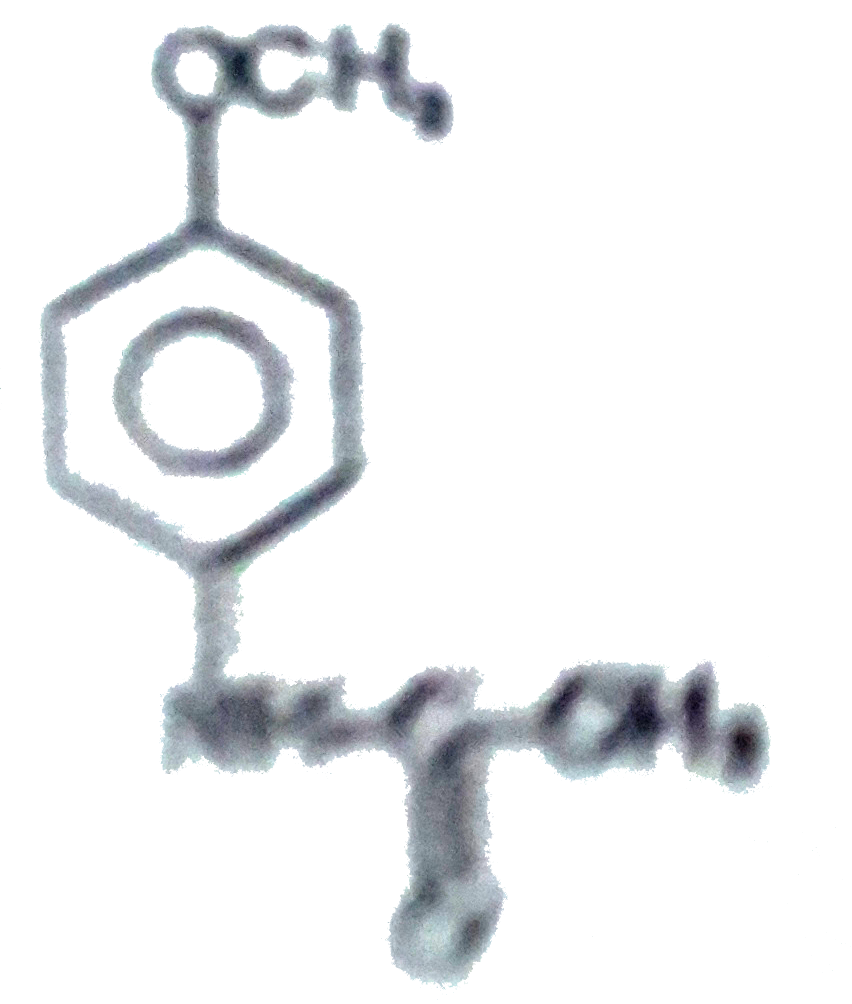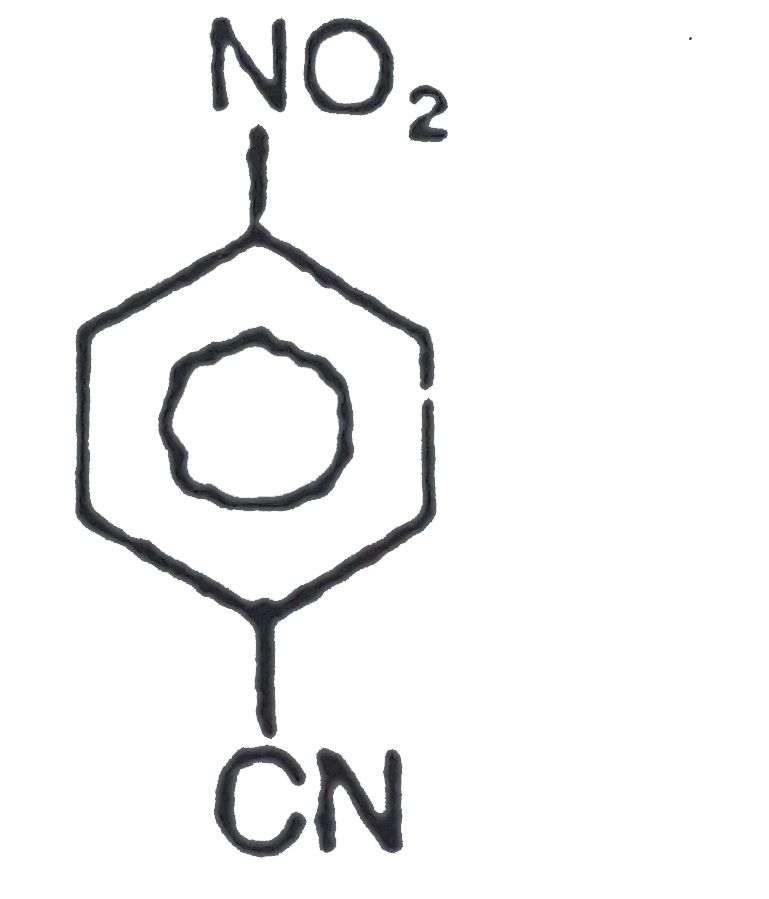The −NO2 group in an aromatic ring deactivates the ortho and para positions for an electrophilic attack. When −NO2 group is present at ortho or para positions of a leaving group (Nucleofuge) it activates the ring for nucleophilic attack. The reduction of −NO2 group by metal in acid causes its reduction to −NH2 group and then the ring becomes strongly activated for a electrophilic attack. The strong activation of −NH2 group is moderated by its acylation with CH3COCl to −NHAc group. Deacylation is carried out by hydrolysis with H3O+ or OH−. The ring alkylation by using RX/AlX3 is not possible in presence of −NO2 or −NH2 group but is possible in presence of −NHAc group.

The product (G) is :




The correct Answer is:B
Step by step video & image solution for The -NO_(2) group in an aromatic ring deactivates the ortho and para positions for an electrophilic attack. When -NO_(2) group is present at ortho or para positions of a leaving group (Nucleofuge) it activates the ring for nucleophilic attack. The reduction of -NO_(2) group by metal in acid causes its reduction to -NH_(2) group and then the ring becomes strongly activated for a electrophilic attack. The strong activation of -NH_(2) group is moderated by its acylation with CH_(3)COCl to -NHAc group. Deacylation is carried out by hydrolysis with H_(3)O^(+) or OH^(-). The ring alkylation by using RX//AlX_(3) is not possible in presence of -NO_(2) or -NH_(2) group but is possible in presence of -NHAc group. The product (G) is : by Chemistry experts to help you in doubts & scoring excellent marks in Class 11 exams.
Updated on:21/07/2023Topper's Solved these Questions
- AROMATIC COMPOUNDS BOOK - RESONANCE ENGLISHCHAPTER - AROMATIC COMPOUNDS EXERCISE - Exercise -3 Part-I
36 Videos
- AROMATIC COMPOUNDS BOOK - RESONANCE ENGLISHCHAPTER - AROMATIC COMPOUNDS EXERCISE - PART-II JEE MAIN
19 Videos
- AROMATIC COMPOUNDS BOOK - RESONANCE ENGLISHCHAPTER - AROMATIC COMPOUNDS EXERCISE - PART-III ONE OR MORE THAN ONE OPTION CORRECT TYPE
10 Videos
- ATOMIC STRUCTUREBOOK - RESONANCE ENGLISHCHAPTER - ATOMIC STRUCTUREEXERCISE - ORGANIC CHEMISTRY(Fundamental Concept )
16 Videos
Similar Questions
Assertion : In strongly acidic solution, aniline becomes less reactive towards electrophilic reagents .
Reason : Due to protonation of amino group the lone pair of electrons on nitrogen is not available for donation to benzene ring by resonance .
View SolutionPicric acid is:
View SolutionWhich of the following can decolourise bromine water solution?
View SolutionThe magnetic moment of .25Mn in ionic state is √15B.M, then Mn is in:
View SolutionThe general electrophilic substitution reaction (replacement of H. by an electrophilic which is an electron deficient species) in aromatic ring is represented as followed.

An electrophilic attacks on ortho and para positions which respect to a stronger +m group are present in benzene ring and the electrophilie attacks at meta position with respect to stronger -m group if two -m groups are present in benzene ring.
If electrophilic Br⊕ attacks on the product will be :
the product will be :
View SolutionThe general electrophilic substitution reaction (replacement of H. by an electrophilic which is an electron deficient species) in aromatic ring is represented as followed.

An electrophilic attacks on ortho and para positions which respect to a stronger +m group are present in benzene ring and the electrophilie attacks at meta position with respect to stronger -m group if two -m groups are present in benzene ring.
What will be the product when electrophile Br⊕ attacks on
View SolutionThe -NO_(2) group in an aromatic ring deactivates the ortho and para positions for an electrophilic attack. When -NO_(2) group is present at ortho or para positions of a leaving group (Nucleofuge) it activates the ring for nucleophilic attack. The reduction of -NO_(2) group by metal in acid causes its reduction to -NH_(2) group and then the ring becomes strongly activated for a electrophilic attack. The strong activation of -NH_(2) group is moderated by its acylation with CH_(3)COCl to -NHAc group. Deacylation is carried out by hydrolysis with H_(3)O^(+) or OH^(-) . The ring alkylation by using RX//AlX_(3) is not possible in presence of -NO_(2) or -NH_(2) group but is possible in presence of -NHAc group. The product (G) is :
View SolutionThe −NO2 group in an aromatic ring deactivates the ortho and para positions for an electrophilic attack. When −NO2 group is present at ortho or para positions of a leaving group (Nucleofuge) it activates the ring for nucleophilic attack. The reduction of −NO2 group by metal in acid causes its reduction to −NH2 group and then the ring becomes strongly activated for a electrophilic attack. The strong activation of −NH2 group is moderated by its acylation with CH3COCl to −NHAc group. Deacylation is carried out by hydrolysis with H3O+ or OH−. The ring alkylation by using RX/AlX3 is not possible in presence of −NO2 or −NH2 group but is possible in presence of −NHAc group.

The product (H) is :
View SolutionThe −NO2 group in an aromatic ring deactivates the ortho and para positions for an electrophilic attack. When −NO2 group is present at ortho or para positions of a leaving group (Nucleofuge) it activates the ring for nucleophilic attack. The reduction of −NO2 group by metal in acid causes its reduction to −NH2 group and then the ring becomes strongly activated for a electrophilic attack. The strong activation of −NH2 group is moderated by its acylation with CH3COCl to −NHAc group. Deacylation is carried out by hydrolysis with H3O+ or OH−. The ring alkylation by using RX/AlX3 is not possible in presence of −NO2 or −NH2 group but is possible in presence of −NHAc group.

The product (I) is :
View SolutionWhich of the following statement is /are correct ?
An activating group is an electron releasing group
2. An activating group activate all position of benzene ring
3. The effect of any group whether activating or decativating is the strongest at ortho and para position in the benzene ring
4. An activating group activate only the ortho and para position in benzing ring
View SolutionWhich of the following stes of groups activates the ortho and para positions in electrophilic aromatic substitutions ?
View SolutionHow many of the following groups are ortho,para directing and ring activating?
−NO2,−CN,−CH3,−OH,−NH2,
−OR,−X,−CHO,−NHR
View Solution(A) : -NH_(2) group of aniline is ortho, para directing in electrophilic substitutions (R ) : -NH_(2) group stabilises the arenium ion formed by the ortho, para attack of the electrophile
View Solution(A) : With Br_(2) water, aniline gives 2,4,6 tribromoaniline. (R): In aniline, NH_(2) group is ring activating and ortho and para directing group.
View SolutionThough Chlorine is an electron withdrawing group but it activate the ortho & para position in the benzene ring for electrophilic attack. Explain.
View Solution
